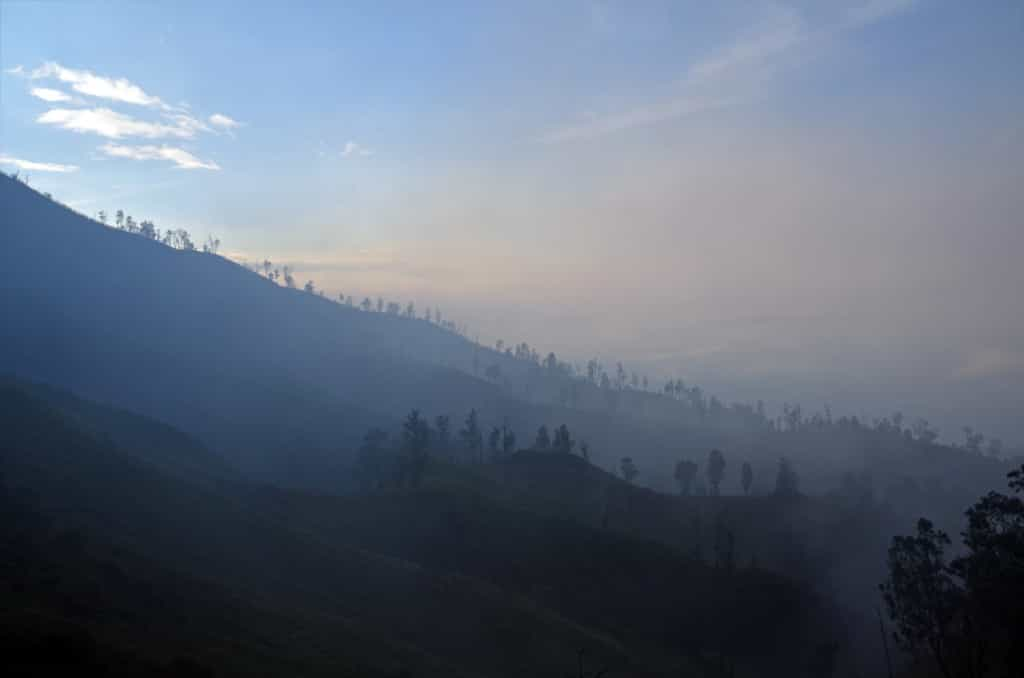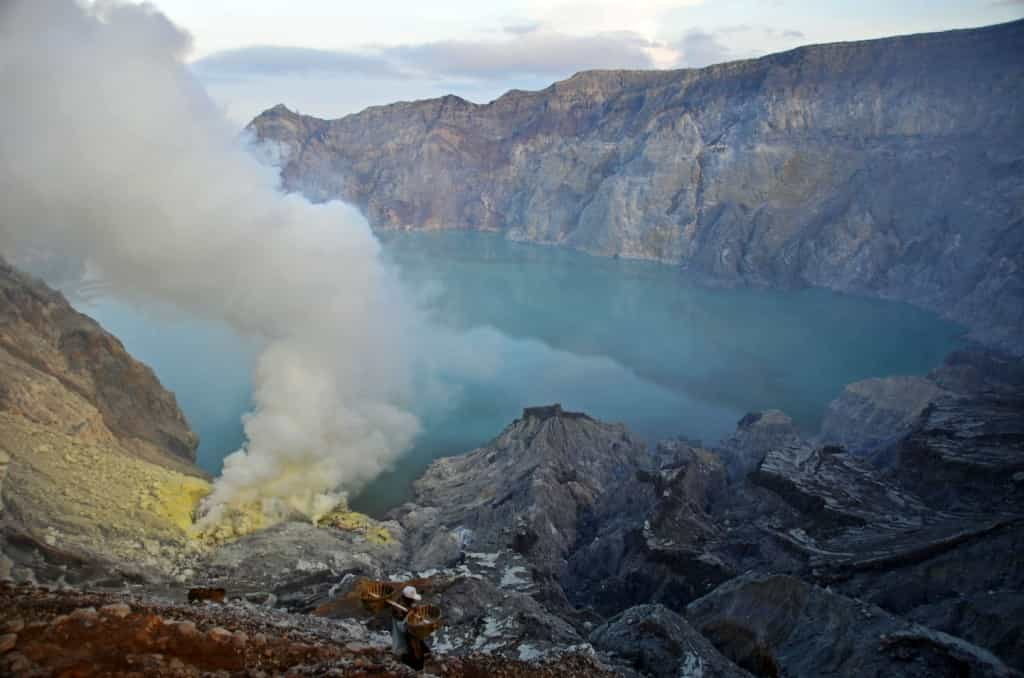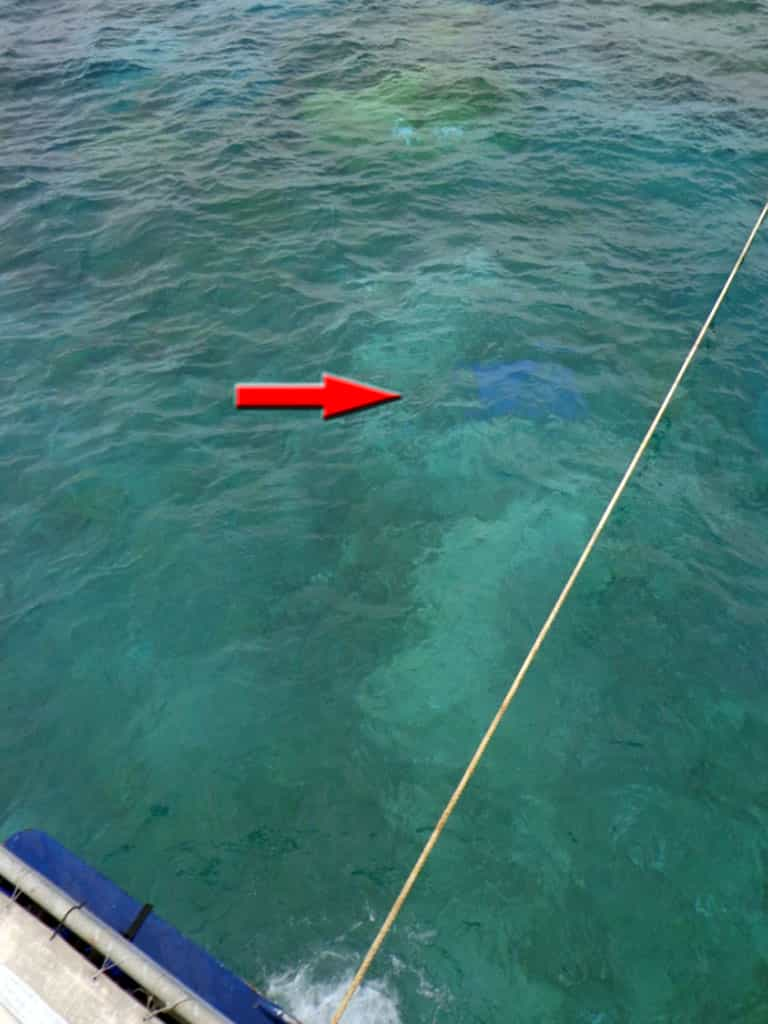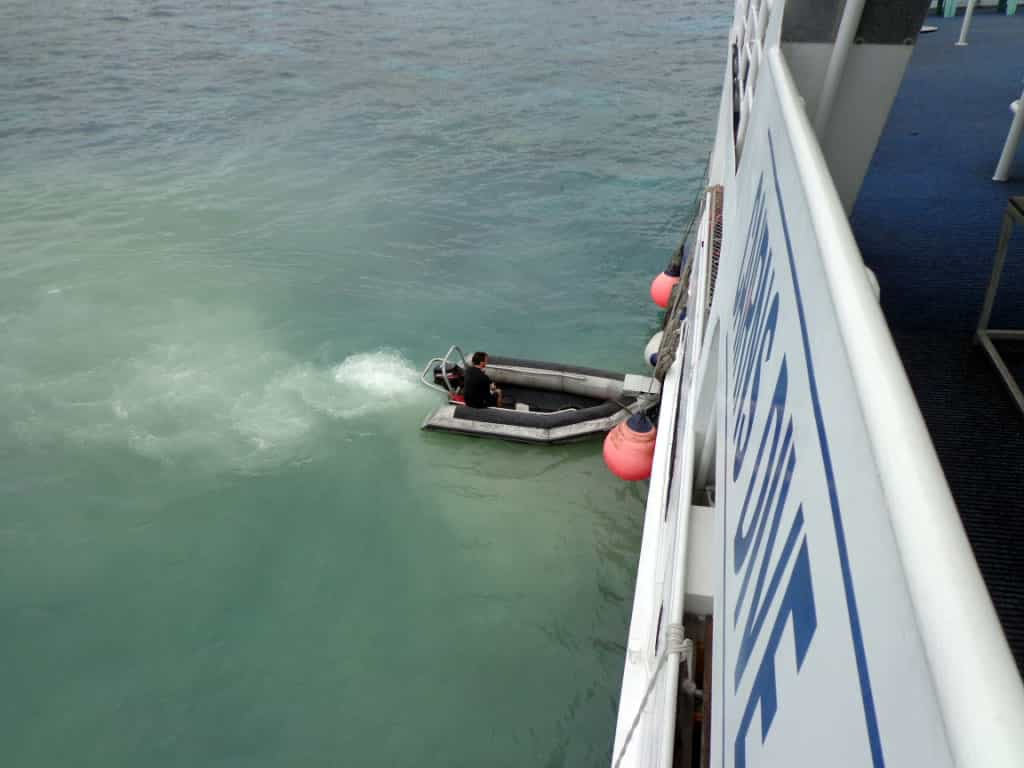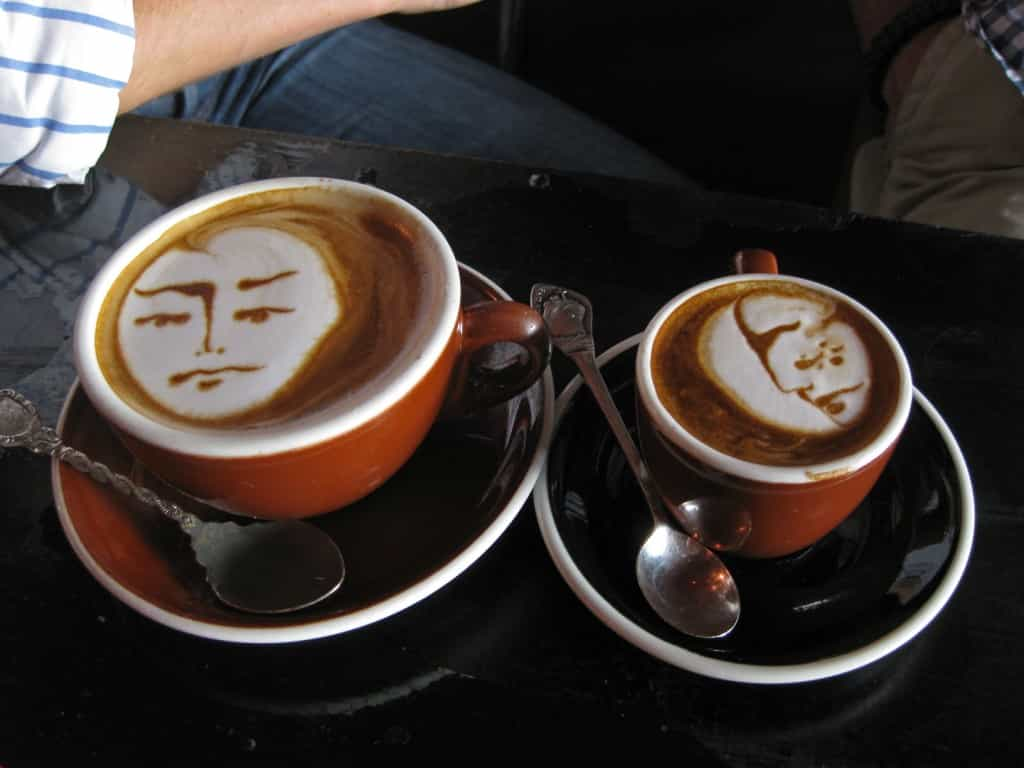
I begin this story with a sad picture; the one which cost me a camera lens. While visiting the Elephant Temple in Bali, I slipped on a mossy and wet stone step. I caught myself with my left hand and raised the right one, keeping the camera away from the stairs, but smashing it on the stone wall. Now the focus ring is very stiff, so the autofocus motor can’t turn it, making the lens manual focus only. I had just bought this Sigma 18-250 Macro a month ago. A compromise lens to replace the three I was travelling with, and inconveniently sent back to Canada. Anyways, some sacred water statue things, forgot the details. Hope you enjoy the photo, it cost $600 to take.

Luckily, I had my little point-and-shoot camera with me. The Elephant Temple is really spectacular in the way it is integrated in its natural surroundings. Also, like old Buddhist temples in the rest of South-East Asia, it has the charm of still being used by devotees. I saw wonderful things in the great Inca and Maya archeological sites of Mexico, Belize, Guatemala and Peru, but it’s just not the same when the religion died centuries ago. On that note, in case you didn’t know, while the rest of Indonesia is predominantly Muslim, Bali is overwhelmingly Hindu.

Several temple complexes also have their own rice fields. These are generally not very big and don’t serve a commercial purpose. To the Balinese Hindu, they provide the rice used for special occasions or festivals. To the tourists, they provide beautiful scenery.

Devotees bathing in the holy water. Each one of the 17 sources has a specific use or meaning and symbolic offerings are placed on top (you can see the big piles on this photo). Nobody seems to care when non-Hindu visitors use the place. A few Westerners were bathing to the right, including a fat dude who was the only one around a particular source. My guide told me that one was only used by women, to ritually cleans themselves at the end of their menstruation cycle. I couldn’t stop laughing and, looking at this picture the next day, I think I caught the expression of the old guy in a tank top thinking: “What the…!”.

While hard to see in a picture, the bottom of this pond is a big cloud of bubbling grey sand. A natural water source comes out of the ground at this location and provides the temple’s water. I was told it is part of a larger underground source system which is also used for the commercial production of bottled water, a big business in Bali, since the tap water is not potable.

I had booked a day trip with a French woman travelling solo. I was at the company’s office and heard her being told there was a two person minimum for the tours, right after I had been told the same. The solution was obvious. We had the luck to visit this temple on the day of a festival, which seem rather frequent in Bali. Local women were busy setting up their offerings. From what I understood, temples are divided in three areas. Men and women worship together in the same area, but the other two areas, where all the preparation take place, are segregated. Women might be baking cakes on one side while the men butcher and cook animals on the other.

One layer of fruit, bag of doughnuts, one flat chicken, cake, offerings. There must have been literally a ton of food in the temple, and this might seem – from a non-religious point-of-view – as a colossal waste of food, but it is not. The food is only ritually offered. They set-it all up in the morning, have the ceremony, and then they take it back home for lunch.

The only thing as prevalent as religion in Bali is art (and taxi touts). Painting, sculpture, furniture design, clothing; you will find it all, and in all levels of quality from tourist shop junk to World class pieces. And the tourist shop junk is better than the best art in many countries. Knowing that, as a long-term traveller, there was no way I would buy a statue, I did not linger in the stores, but I certainly noticed the statues. I have no idea who this character is, but I know we don’t have statues like that in Canada!

This mural on Lembongan Island left me to wonder if religion could sometimes be too present!

On top of graphic and plastic arts, Bali is also very well known for its traditional dances. I went to one show in Ubud. Lasting an hour and a half, it was a tourist-oriented kind of medley, aimed at demonstrating a variety of styles in a short period. I was told a real traditional performance might get a little boring if you don’t understand what’s going on. As a matter of fact, while I got none of it, each movement of the dancers, each position of the fingers, orientation of the eyes, carries a meaning. They start as children and take years to master the routines. If you want to “express your inner self through creative dance”, I suggest going for something else.

Back on the topic of offerings. In Bali, they are everywhere: in front of any place people live or work, on anything that moves (car, boat, even motorbike), and, of course, on all the temples and the shrines people have at home. It is common for families to make 50 or 60 basket of offerings, everyday! While I was not planning to, I got to learn how to make them.

Basically, you use little bamboo needles to stitch together a basket from banana leaves, throw in a few flowers, and put the offering on top (some grass or shaved leaf, I forget). People often add something else, such as burning incense, a candy, some money. I even saw an Oreo cooky! Now, “why?” you ask, looking at the picture.

As it turns out, it was part of a class I enrolled in at the Payuk Bali Cooking School. I had only done this once before, a few years ago in Chiang Mai, Thailand. This one was a lot better, mostly because of the incredible chef, Ketut Budi. Until less than two years ago, he worked as a hotel chef. Then he decided to learn English and get in this business. He was incredible and I have rarely met someone with such a contagious laughter. We started by visiting the local traditional market and, after the offering-making interlude, we hit the kitchen. Here you see some of the ingredients for the multipurpose Balinese spices and the peanut sauce.

Same ingredients, a lot of chopping later. There were only three of us “students”, so it was very hands on.

However, this was luxury “hands-on”. I quickly realized that grinding peanuts with a mortar and pestle is a lot of work. There was no blender in sight, but there was much better…

Two assistants to take over! This is cooking at its best. You do all the fun things, and all the boring stuff, the getting things out and the cleaning, just happens magically.

The satay grilling. These are very different than Thai satays. The chicken is not cut into thin strips, but rather crushed into a chunky paste (using a bigger mortar and pestle, of course), mixed with spices of all kinds, and then formed in a small ball at the end of a rather large satay stick. Quite delicious they are.

And our creations, ready for lunch, in a beautiful open dining room overlooking a ravine with a river at the bottom:
– Vegetable salad with peanut sauce (Gado gado)
– Yellow rice (Nasi kuning)
– Balinese chicken satay (Sate lilit)
– Balinese fried chicken (Ayam Bumbu Bali) – not really fried, more like sautéed
– Steamed fish in banana leaf (Pesan be pasih)
– And braised banana saba in palm sugar (Kolak pisang)
You don’t go to such a half a day thing to actually learn how to cook. But, the market visit was interesting, as you get to see all sorts of unfamiliar things and also some of the products we use in the West, but in their unprocessed form. You also learn a few recipes and get a nice lunch. And for all you guys out there, in Bali as in Thailand, I was the only male customer.
A final note on our chef’s name. I learned that the Balinese have a very unique naming system. There are many exceptions so don’t take the title literally, but they mainly use only four first names, either for girls or boys. The first child is named Wayan, the second Made, then Nyoman and Ketut. If they have a fifth, he or she is know as Wayan Balik (“Wayan again”). Certainly unique.

While visiting a coffee plantation, I came across this evil-looking creature, the asian palm civet (paradoxurus hermaphoditus). I am certain some of you have heard of Kopi Luwak, a novelty, ultra expensive coffee. Basically, the animals are fed coffee beans. They digest the outer layers, but the final layer enveloping the bean remains intact and they are collected in the animal’s droppings, with the bean apparently favourably altered in some way.

After being washed and having their skin peeled by hand, the beans are roasted over a gentle fire.

And you get one cup of poop coffee. I will not claim to be a coffee connoisseur, so all I can say is that is was a good cup of coffee. Apparently, experts agree that the interest comes from the rarity and novelty, not from any remarkable improvement in taste. Would I pay over $100 a cup in a London restaurant? No. $5 a cup where they make it? Sure. By the way, $5 for a cup of coffee is insane in Indonesia. A few days later I stopped at a little joint frequented by sulphur miners in Java, along with three people from Singapore. We had twelve pieces of fried banana, a cup of tea and six cups of coffee for $4.20.

While visiting Lembongan Island, I saw a seaweed farm. I had always thought seaweed was harvested where it grew naturally. Not so in Lembongan. Locals tie pieces of seaweed on large nets, as this man is doing (when not stopping for a smoke break).

The nets are then fixed to the bottom of this shallow bay using large wood stakes. It really is an underwater farm, with each family allotted a “plot”.

After only 45 days, the seaweed is collected and dried, using the big fusion reactor in the sky. They sell it for $0.40 a kilo and it starts its long way to your ice cream (as an emulsifier) or your cosmetics (as an impressive-sounding ingredient).

Photo: Joey, my dive partner from Singapore, with a GoPro
This animal may look like a stingray, but that’s because you can’t see the head well. It is in fact a manta ray. The reef kind like this one can grow to more than 5 meters wide. I had only ever seen one before, in Thailand’s Andaman Sea. On that one dive, I saw 4. This picture got me seriously considering buying a GoPro camera.
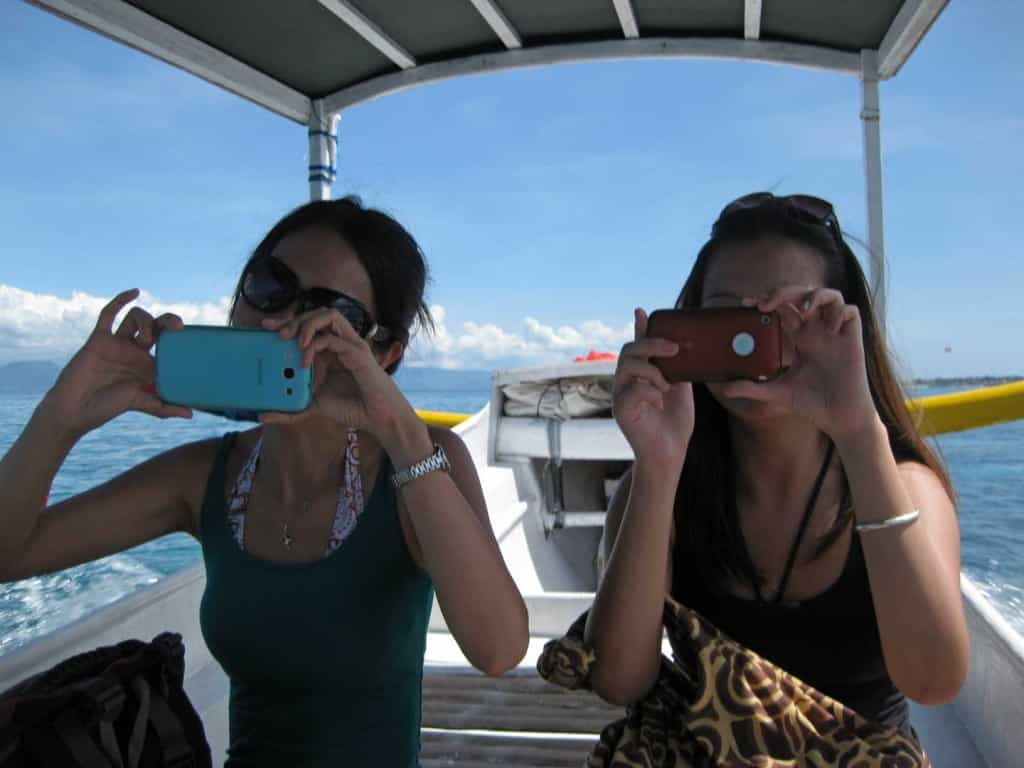
Apart from my diving partner Joey, I met a ton of people in Bali. In fact, I had planned to post more often instead of infrequent, long posts, but I ended up going out for dinner with the people I met every night but the last. These two Chinese college teachers and I thought the boat was a good place for pictures. Unfortunately, we had the idea at the same time.

Julian, the artist from Germany. When on vacation, he likes to buy paint and offer various building owners to do something on the walls for free. This was the side wall of our hotel.

This is just a little thing he did while I was taking a short post-diving nap. But he is a pro. Big name companies like Adidas commission enormous murals from him. Check out his work.

And Karin, from Sweden, who learned that when you order pineapple chicken in Bali, you get a chicken and a pineapple! Like I did to my Australian friends a few months ago, I said I would see her in Stockholm (and to Julian that I would see him in Nuremberg). Not quite sure how this will happen, but it will. Incidentally, this morning I did it again in Java, telling Singaporean tourists I would see them in Singapore. However, since I am planning to go this week, that should be rather easy.
#Indonesia









